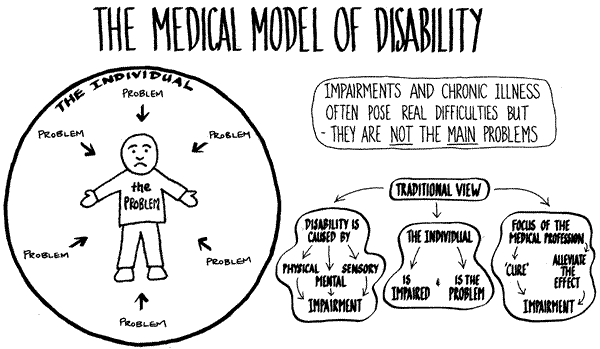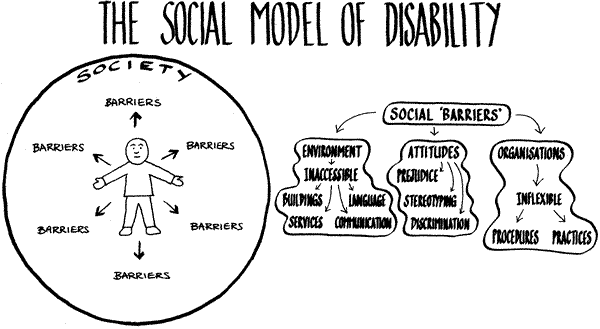Engaging Disability & Universal Design in the Writing Center
Heather Lang
Assistant Director, FSU Reading and Writing Center
Spring 2017

Praxis
Theory + Practice
Thinking with Disability Studies
Disability studies draws on critical, social, and constructivist theories in order to understand disability in a variety of contexts and addresses problems of access, inclusion and exclusion, difference, and diversity. By interrogating history, disability studies provides a lens that is beneficial to almost any discipline. In writing studies and instruction, it can help us interrogate myths about students with disabilities and what they want/expect from instruction, such as that students want to be treated the same as other students. It can also help us provide students with a critical method for interrogating texts and the social systems in which they operate by demonstrating who has power in a situation, what purposes the power serves, and what contexts linguistic power emerges in. Accommodation can lead to more rich creative experiences inside the classroom. The editors advocate for universal design techniques that anticipate a wide variety of learners in a wide variety of ways.
Models of Disability
Disability studies actively resists The Medical Model of Disability. In this model of disability, the individual is regarded as someone with a problem to be fixed. In this model, the individual is "treated" or meant to be "cured." This model puts the burden for accommodation on the individual, and it doesn't take into account the fact that social systems contribute to the "disabling" aspects of a medical condition. It also tends to essentialize people based on their conditions and sees the experiences of all people with disabilities as the same.


Disabilities studies promotes viewing disability in a Social Model of Disability that acknowledges that there is no real "normal" body, and bodies become disabled because of the social circumstances the inhabit--not because anything is inherently wrong with the body. The social model promotes acceptance, collaborative problem solving between people with and without disabilities, and seeks to remove barriers to participation in a variety of spaces. A social model of disability also holds that acommodations made for one should be available, and beneficial to all.